Celebrating the Lunar New Year: Inspiring a Contemporary Artist
- Blog Post
- Collection
Motifs in Chinese Art

Lunar New Year is celebrated according to the lunar calendar, and this year it takes place on Tuesday, February 1. The holiday is influenced by Chinese New Year; however, it is also celebrated—with variations—in Japan, Korea, Vietnam, and many other Southeast Asian countries. Traditions also vary depending on the region of China.
The Chinese zodiac consists of a cycle of twelve animals and 2022 is the Year of the Tiger (opens in a new tab). People born in the Year of the Tiger (opens in a new tab) are courageous, active, and love a good challenge and adventure in life. There are also traditions associated with the holiday; here are a few:
1. Cleaning the house—The house should be cleaned BEFORE the holiday to get rid of any bad luck.
2. Wearing red—This is considered a lucky color believed to scare away spirits of bad fortune.
3. Making and eating dumplings—Dumplings signify family reunion. On this holiday, the whole family spends time making dumplings together in preparation for New Year’s Day.
4. Exchanging red envelopes—Red envelopes, or packets, hold money and are traditional gifts for special occasions.
Now that you know a little more about the traditions of Lunar New Year, let’s look at some common motifs in Asian art. Artist Jordan Wong often visits the CMA’s Chinese and Asian art collections, drawing parallels to his own art. He shares these similarities in relation to his personal reflections.
Finding a sense of belonging was difficult for me growing up as a second-generation Chinese American. I did not learn Mandarin or Cantonese, and I lived in an area where I could count all the Asian students on one hand. It left me feeling disconnected from my family and ethnicity, as well as from my friends and classmates. I was often faced with the uncomfortably implicit question of “Where are you from?” by strangers. Additionally, the inability to understand conversations at family dinners fostered loneliness and a sense of isolation, but also offered a unique opportunity to begin defining myself outside those contexts.
While my work has always been influenced and inspired by Asian culture and art, especially considering my fascination with anime and manga as a kid, I began exploring deeper into Chinese and other Asian cultural motifs, design elements, and imagery in 2019. However, I did not want to simply copy these observations to emulate traditional Asian art. Instead, the goal was to reimagine and share these inspirations as new additions to my own preexisting illustrative and graphic design–inspired visual language.
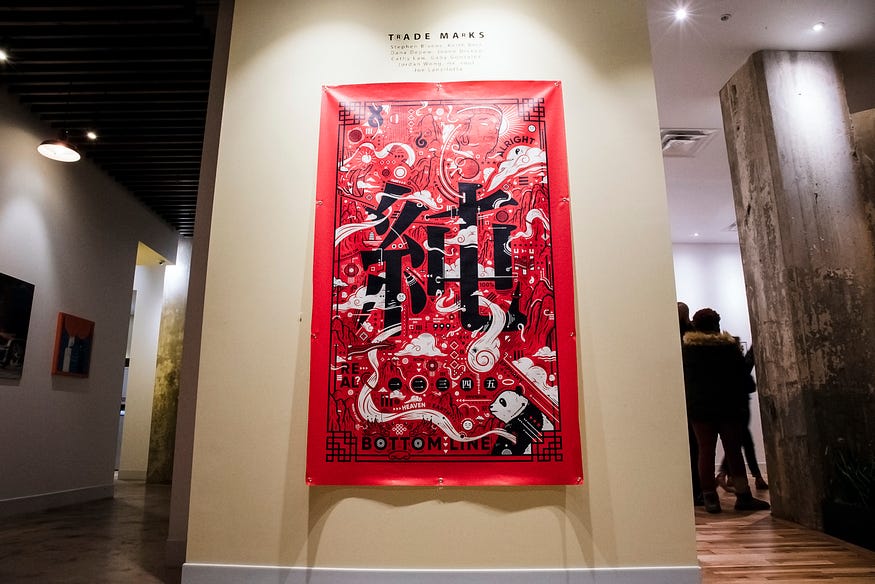
Fire and Flames
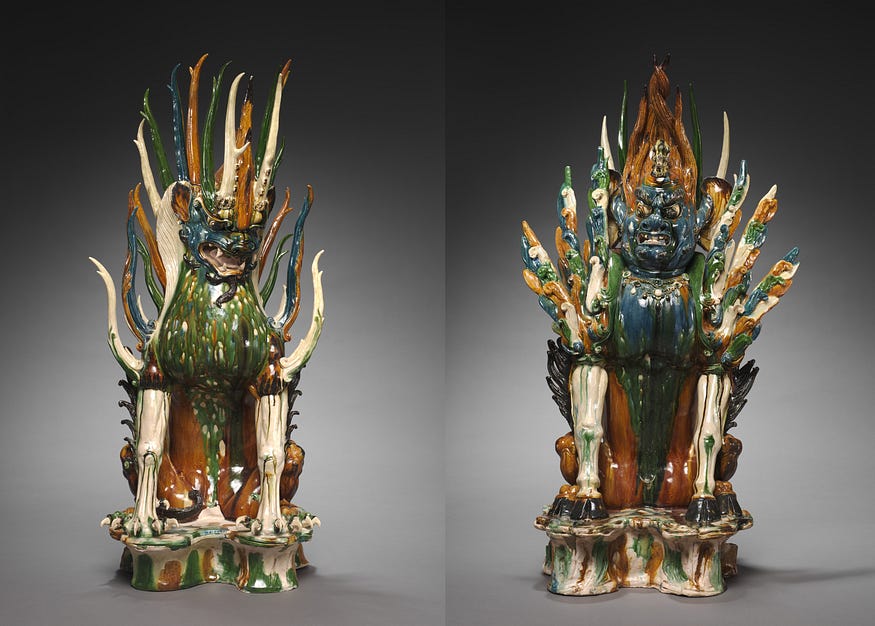
Qi, or energy, is a central concept of nearly all Asian and Eastern cultures that has fascinated me since I was a kid, and especially when watching the iconic scenes of characters powering up in anime and manga, like Akira Toriyama’s Dragon Ball Z (opens in a new tab) series. While some see long spikes surrounding the Tomb Guardians, I see colorful flames that swirl and burst upward and outward. This concept and theme of energy appears regularly in my work. At times it is fluid and flowing, and at other times bursting and blazing. When the flames are eruptive and expansive, I am reminded of explosive growth, galvanizing epiphanies. In You Have Power (center) the flames swirl around a female warrior or heroine to signify her power and courage.
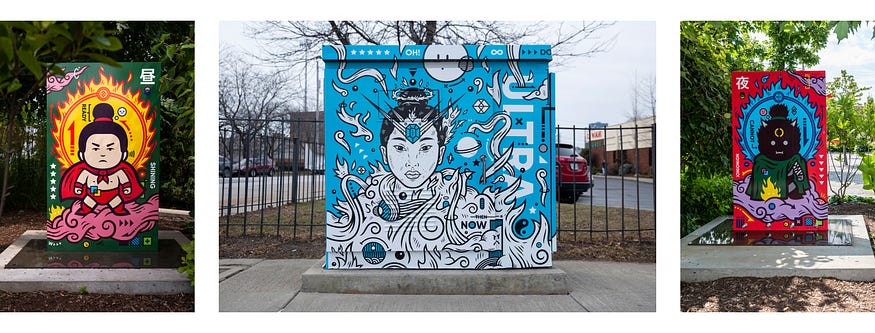
Curls and Clouds

It is always a fun challenge to share the things we can’t physically see: the mystical, philosophical, and emotional. Since clouds inspire ideas of the divine, heaven, gods, and things beyond the earthly realm, I incorporated them around the lendary, mythical figure of the Monkey King (opens in a new tab). It’s a callback to my childhood memories of watching the show Journey to the West. Depictions of clouds in Asian art include a signature curl, creating a fanciful, dreamlike atmosphere. The carved cloud-collar spandrels and openwork panels with similar cloudlike patterns inset between the legs and the feet on Side Table with Everted Ends are a great example. Similar to my own work, these clouds offer a sense of weightlessness and a whimsical nature.
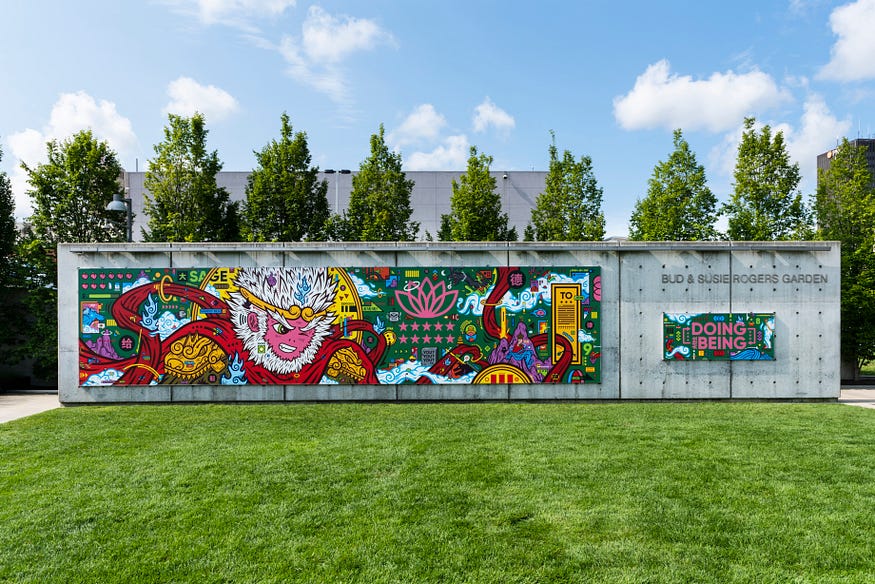
Patterns on Porcelain
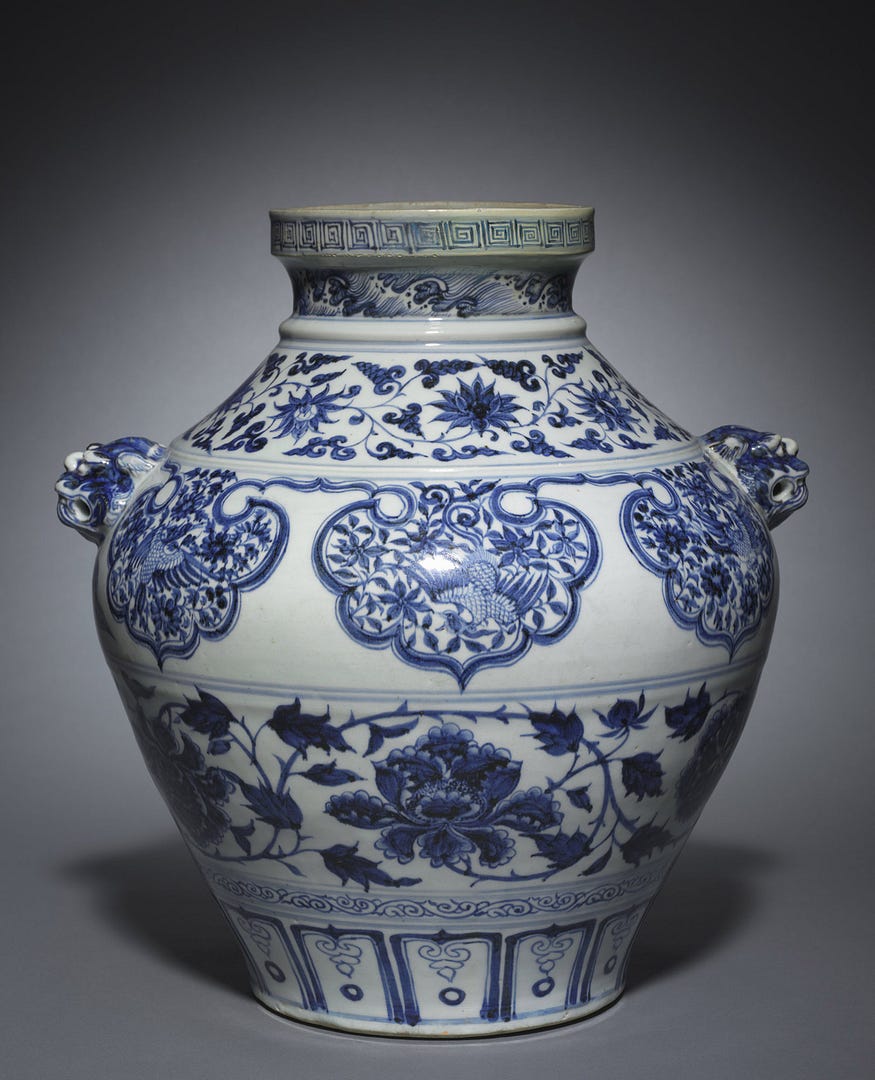
When I think of traditional Chinese art, Jar with Lion-Head Handles and other blue and white ceramics immediately come to mind. I notice the intricacies in the border designs, the overall ornamentation, and the use of positive and negative space. Specifically in Tall Grass XLR (G. Garden), I pay homage to the inspiring and beatiful works of the past, while also interpreting it in my own way. Here, I added porcelain-like designs and coloring on the armor and on the various ceramics. It is also another example of how I’ve been able to use art as a means to connect with my culture and heritage that is familiar, yet distant.
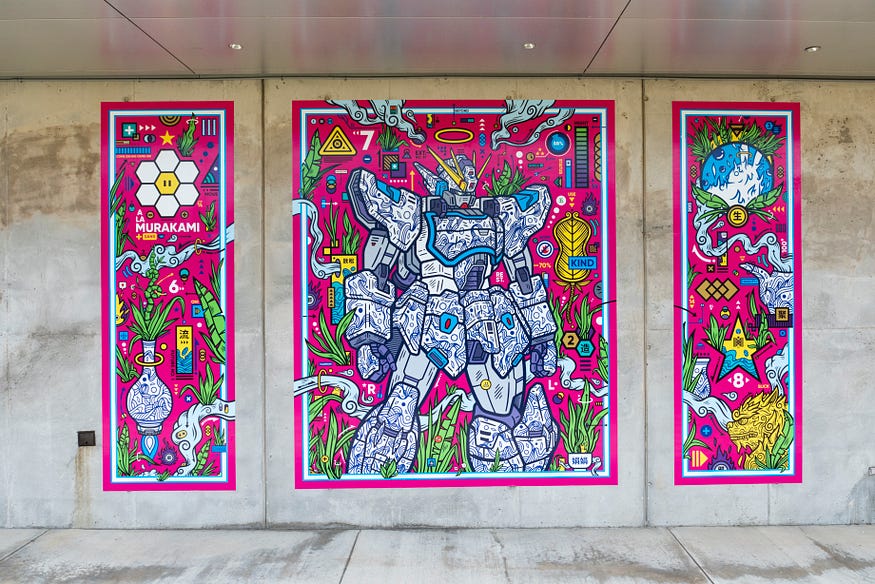
Water

Another way to represent the idea of energy is by using water and flowing forms, similar to fire and flames. While it’s seldom that I explicitly illustrate water as a subject, its nature inspires much of my imagery. The river in Morning Sun over the Heavenly Citadel Peak is an example of the swirling ebb and flow of water. Even the clouds in my work mimic this idea of movement. Daoist (opens in a new tab) ideas of effortlessness, relinquishing control, and getting out of one’s own way have played a huge role in my recent creations. Coincidentally, the mountains depicted in this hanging scroll are associated with the legendary Yellow Emperor and the Daoist idea of immortality. Water perfectly encapsulates all these ideas.
I am grateful that what I create has not only allowed me to connect to my ethnicity and heritage in a way unique to me but has also resonated with the Asian American communities in my hometown of Pittsburgh and in Cleveland, and with others who have had similar feelings and experiences.
Visiting the CMA’s collection of Asian art allows me to compare and contrast these objects with what I, a contemporary artist of Asian heritage, create today. While ancient artists used ink and brush to produce drawings and paintings, I use an Apple pencil, iPad, MacBook laptop, and Adobe software to manifest artwork. Although the tools and media may differ, it is all still done with the same intention: to use line, shape, form, and color to share musings and emotions.
Celebrate Lunar New Year by roaming the many Asian art galleries or searching in Collection Online — you may find some of these recurring motifs. Happy Year of the Tiger!
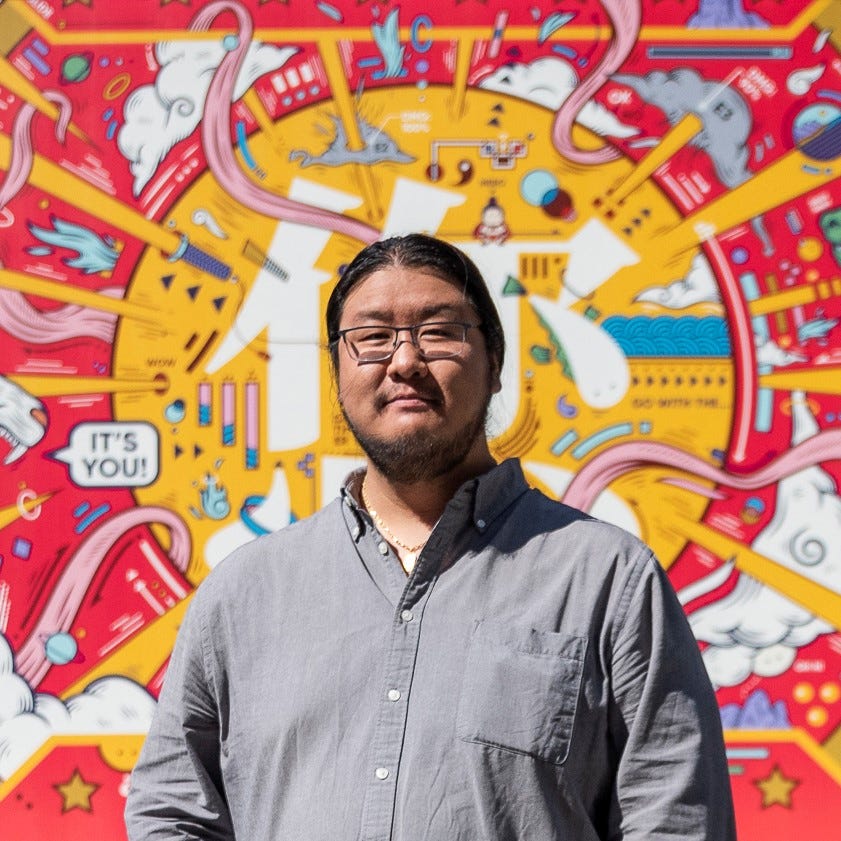
Jordan Wong (WONGFACE (opens in a new tab)) is an artist who loves to inspire and delight others through illustration and graphic design. He is fascinated with moments of triumph found in Asian art (namely, Japanese anime and manga), comic books, and video games. These inspirations have fueled the creation of large-scale illustrative installations and public artwork throughout Cleveland. Jordan has also exhibited work at the Children’s Museum of Pittsburgh (2020) and the Akron Art Museum (2021–2022). He is the president of the Cleveland chapter of AIGA, the professional association for design, and was featured in Graphic Design USA’s People to Watch 2021. Find him on Instagram: wongface (opens in a new tab).